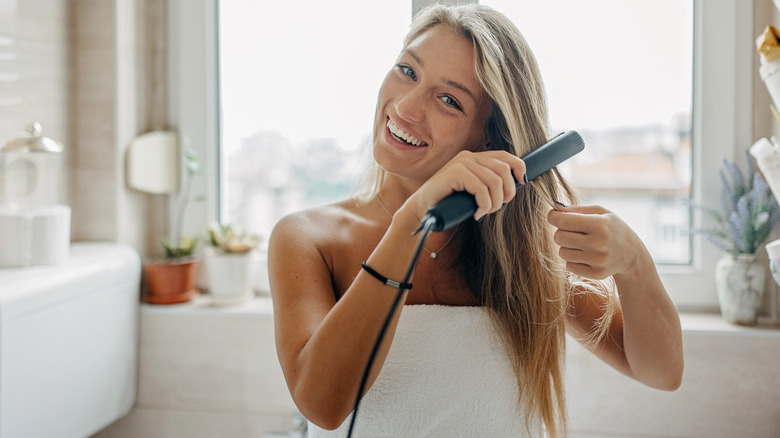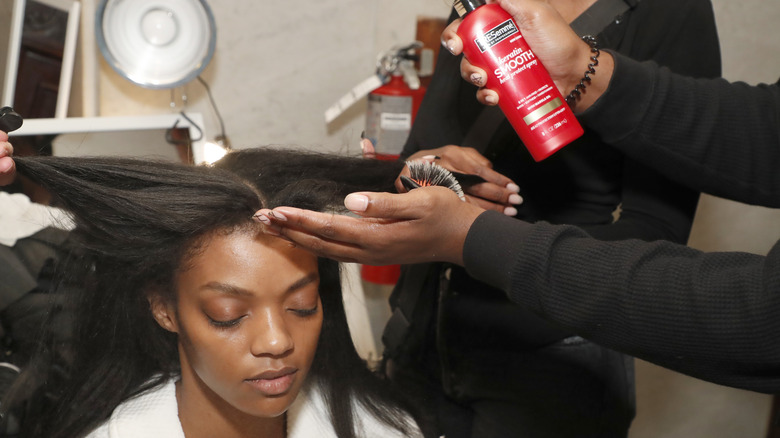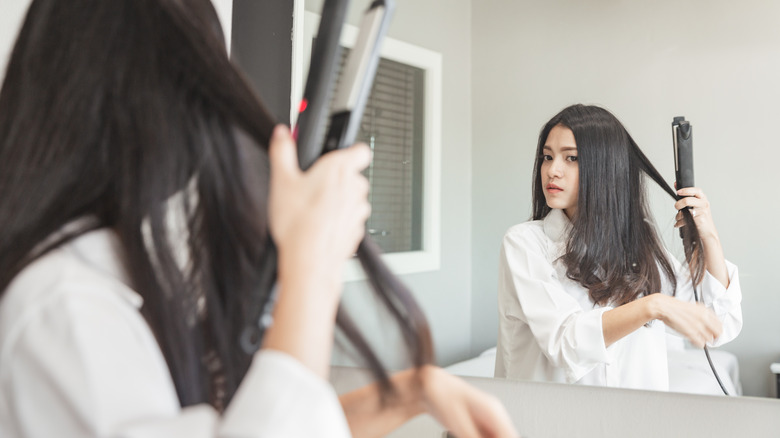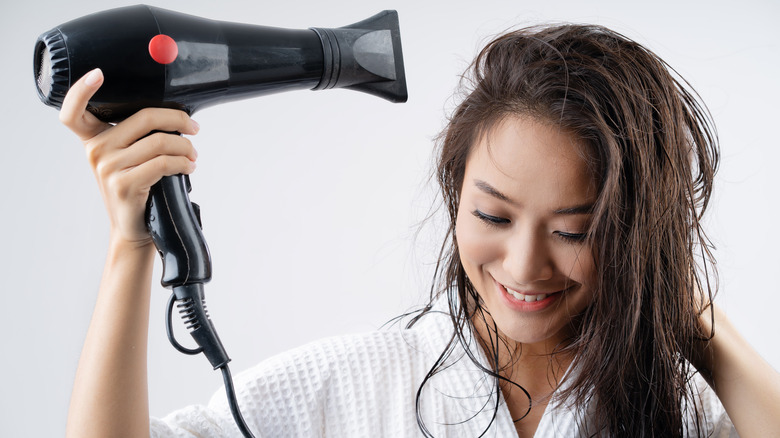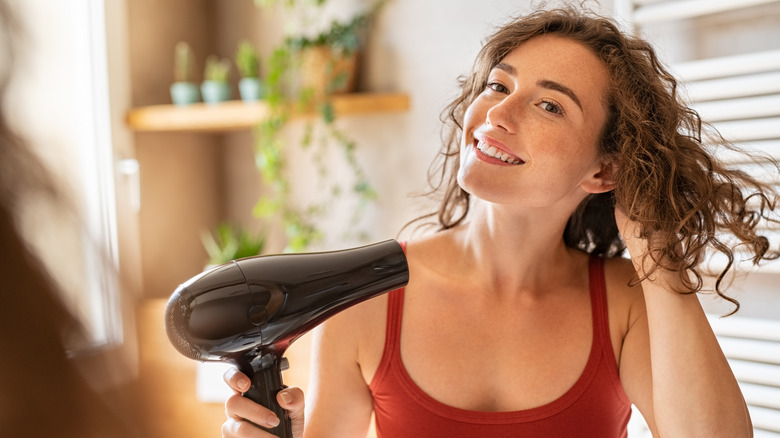How To Use Hot Tools Without Frying Your Hair
While hot tools such as blow dryers, straighteners, and curling irons can make your hair look amazing, they have a less-than-ideal reputation for giving your hair irreversible heat damage. Heat damage is bad news, as it causes your hair to lose its shine, causes split ends, and leaves your hair looking and feeling brittle (via Lab Muffin Beauty Science).
But before you put down your beloved hot tool and opt for air drying for the rest of your life instead — don't fret, as hot tool-induced heat damage is starting to become a thing of the past. Not only have new patented technologies emerged that can repair the damage, such as Olaplex, but hot tools are also being designed in a more hair-health conscientious manner. Along with that, there are many techniques you can use that give you control over how much heat damage you're inflicting on your precious locks. Here are the best ways to use hot tools without frying your hair.
Always use a heat protectant
It may seem obvious, but you'll regret foregoing a trusty heat protectant in the long run. But how exactly does a heat protectant work? "Heat protectants create a barrier or film around the surface of the hair, known as the cuticle — they're essentially a shield between your heat styling tool and the hair," cosmetic chemist Esther Olu told The Cut.
Heat protectants come in many different formulas, such as sprays, creams, oils, and serums. As for how to use a heat protectant, Christopher Wenzel, aka The Blowout Professor, recommends spraying on both the top and bottom sections of the hair for full coverage, and then using a brush to even everything out (via YouTube).
However, it is important to note that while heat protectants certainly reduce damage, they won't 100% protect your hair against it. That's why it's important to follow some other steps when using hot tools.
Use the lowest heat setting — if possible
The science is simple: the more heat, the higher risk of damage. Chemist Dr. Joseph Cincotta told The Cut that temperatures above 392 degrees Fahrenheit will cause permanent damage without a heat protectant. For reference, blow dryers run at up to 140 degrees, while curling irons reach 400 degrees, and flat irons can run up to a whopping 450 degrees. Especially if you have fine, thin hair, it's best to avoid temperatures above 360 degrees to salvage your strands. However, the more coarse your hair is, the more necessary it might be to use higher temperatures in order to get your locks to cooperate with styling. Therefore, those with thicker strands may need to use a setting that reaches up to 410 degrees. Sedu brand manager told StyleCaster that it's important to look for hot tools that let you adjust its temperature so you can style your hair according to its type.
Give your hair some breaks
Another straightforward formula is that the more often you use a hot tool, the more heat damage will occur. Whether you wash your hair once a day or once a week, Wenzel insists that you need to wait at least three days before taking a hot tool to your strands again to give it some time to recover. He also recommends that when using a hot tool on your hair, a good indicator to reduce damage is to stop passing your styling tool through a section of hair when your strands start to feel hot to the touch (via YouTube).
Another tip is to make sure your hair is slightly dry, not soaking wet, before you use a blow dryer to lessen the amount of time heat is applied (via L'Oreal Paris). And do not, we repeat do not, ever use a flat iron against wet hair.
Ceramic and ions are your best friend
While years ago, hot tools were notorious for causing heat damage because they were composed of metal plates, nowadays the technology is much more advanced. When it comes to straighteners, make sure to use one with ceramic plates. This is because the ceramic coating evenly distributes the heat throughout the hair, preventing certain spots from getting fried. Better yet, there are some super fancy tools out there that can even apply moisture to your strands while you use them (via StyleCaster).
When it comes to blow dryers, opt for an ionic one that'll work quickly to reduce the amount of heat applied to the hair. "The negative ions from the dryer counteract with positive ionic charges in your hair, which are caused by damage to your hair's cuticle," celebrity hairstylist Jeremy Tardo told Byrdie. Ionic blow dryers also lock in moisture for overall healthier locks.
